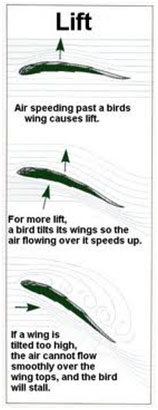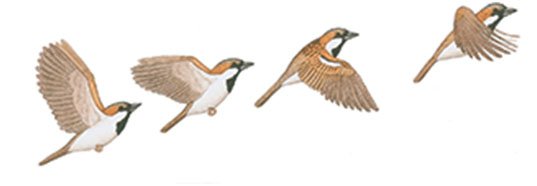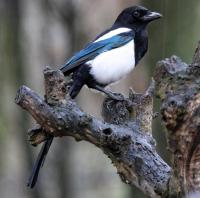- Home
- FAQs
- Customer Video Gallery
- Customer Photo Gallery
- Bird Facts
- Bird Food Blog
- Bird Information
- Feeding Advice
- Small Animal Information
- A to Z of Guinea Pigs
- A to Z of Hamsters
- A to Z of Rabbits
- Basic Care for Guinea Pigs
- Basic Care for Hamsters
- Basic Care for Rabbits
- Basic care for Chinchillas
- Basic care for Ferrets
- Basic care for Gerbils
- Basic care for Mice
- Basic care for Rats
- Buying a Healthy Small Animal
- Does your Reptile need a Licence
- Equipment for Ferrets
- Equipment for Hamsters
- Equipment for Mice
- Equipment for your Chinchilla
- Equipment for your Gerbil
- Equipment for your Guinea Pig
- Equipment for your Rabbit
- Keeping a House Rabbit
- Dog Information
- Cat Information
- Customer Information
- Fat Balls
- Suet Pellets
- Straights
- Seed Mixes
- Suet Treats
- Mealworms
- Bird Feeders
- My Account
How Birds Fly
The flight capability of birds is, perhaps enviably, one of their most amazing adaptations and varies considerably between species. Some species are able to fly at extreme altitudes; Whooper Swans have been recorded at 29000ft or 8850m, whilst others can maintain flight for months at a time without landing, Swifts for example. Still others can cover vast distances in migration and foraging, as in Swifts and Terns, and some can fly at astonishing speeds like a Peregrine falcon, capable of over 190mph or 300kph, when hunting prey.
These are, however, more the extreme that the norm and most birds will typically fly at altitudes of 500ft or 150m or less and speeds of around 10-30 mph or 15-50 km/h. To fly at altitude exposes the bird to stronger, colder winds and predators and as with flying fast requires reserves of energy. As a result most birds reach a compromise to maximise the distance they must travel whilst minimising energy expenditure and therefore the amount of food they must find, a typical small garden bird needs to eat up to 40% of its body weight daily just to survive.
How a bird flies is not chiefly related to its size but has more to do with the shape of its wings. The wings of birds such as House Sparrows and Blackbirds taper to a point and are relatively short, which reduces drag, allows for rapid take off and improves agility for avoiding predators whilst sacrificing high speed ability. Carrion Crows have splayed tips on wing feathers resulting in reduced turbulence which in turn allows birds to remain airborne at low speeds. The wings of Swallows and some falcons are long and flat, ideal for speed, whereas owls and Sparrowhawk have shorter, broader wings which provide for greater manoeuvrability whilst sacrificing overall speed.
For thousands of years humans have looked to the skies and wondered. Just how do birds fly? It was observed that birds flapped their wings, this must be how they fly, but each attempt to mimic this action has not carried a human into the air.
It is only relatively recently that the secrets of how birds fly are being revealed. In order to practice the miracle of flight a bird must first overcome two natural forces:
In order to overcome gravity a bird must generate an opposing force, referred to as lift, and to counter-act drag needs to generate another force, called thrust. When enough lift is generated to overcome gravity the bird will be able to rise into the air and when the level of thrust exceeds the level of drag the bird will be able to move through the air and thus flight is its reward.
Getting airborne
Logically you could be forgiven for thinking that the downward flap of a wing generates the lift, but if this were the case the upward flap would also create lift but in the opposite direction leading to the rather comical effect of a bird bouncing along the ground furiously flapping its wings and getting nowhere except perhaps inside Tiddles. Clearly this is not what happens so whilst the downward flap may indeed generate some lift it is not the only action involved. When observing birds in the air most do not flap their wings continually, instead they hold their wings rigidly outstretched and float, or glide, through the air. Therefore, even when gliding, birds wings are clearly generating lift else the bird would drop out of the sky as soon as it stopped flapping its wings. So what is happening? Lift is actually created by the flow of air over the surface of the birds wings.
When viewed in cross section a birds wing is shaped like an elongated teardrop often with a flatter lower surface than the top, known as an aerofoil. As this aerofoil passes through an air stream it splits the air into two separate streams, one of each passing over the top and bottom of the wing. As the air passes over the top curved surface it creates an area of lower pressure over the wing as it is forced to travel over the curve. The air under the wing is not deflected as much and creates a relatively higher pressure than over the top of the wing. It is this difference in pressure that effectively pushes the wing upwards and so we have lift.
The angle of the wing in the airflow affects the amount of lift generated.
In order to fly forwards a bird must counteract drag and it achieves this by generating thrust. As has been explained wing flapping doesn’t generate significant lift but maybe it generates the thrust needed to move through the air. There is some truth to that assumption but, hardly surprisingly, it is not quite that straightforward, a bird does not simply flap its wings up and down to fly forward. When observed more closely, on the down stroke, the wing tip not only moves downwards but forwards as well and on the up stroke the tip moves backwards. It appears that this action, much like rowing, pushes against the air and propels the bird forwards. But, again, appearances are deceptive and it is still not that simple. Towards the end of the down stroke the flight feathers towards the front of the wing deform and twist so that they are vertically aligned. Each of these feathers has a similar aerofoil cross section shape to it as that of the whole wing and as they pass through the air each creates lift of its own but because they are vertically aligned this lift creates a forward force or thrust.
By altering the shape and angle of the wings and feathers independently some birds are capable of performing extremely acrobatic manoeuvers.
Moulting
Although bird’s feathers are durable and they look after them by bathing and preening they do eventually become damaged, loose their colour or simply wear out. As these feathers are totally lifeless they cannot be replaced like the hair and nails in humans which grow continually and instead must be shed and replaced, a process called moulting. New feathers growing from underneath loosen the old worn out feathers which then drop out. Many species of birds, particularly smaller perching varieties, experience their first moult in autumn to replace the juvenile plumage with its first winter plumage although it is often only the head body and wing covert feathers that are replaced on this occasion.
In some cases the first winter moult will adorn the young bird in its full adult plumage, for others it may take further moults to achieve the appearance of the adults, Blackbirds don’t take on their adult plumage until the second moult and some seabirds may take as much as 4 years to do the same.
Male birds in particular also change their appearance between, summer breeding and winter non-breeding plumages with brighter summer colours to help attract a mate.
The act of moulting uses up a lot of energy and in order that birds don’t lose the ability to stay warm and to fly they tend to moult over a period of time. They also tend to moult at less stressful times, after breeding in late summer for example, when food is still in plentiful supply. In migratory species, moulting takes place either before leaving, the Chiffchaff, when they arrive, the Garden Warbler or starts before leaving and is completed after arriving.
If the flight feathers of the wings and the tail feathers were moulted all at once a bird would lose its ability to fly, not to say look pretty weird. In order that this is not the case most birds moult these critical feathers in carefully co-ordinated sequences although these vary from bird to bird.
Water birds, however, do tend to moult all of these feathers at once and so are unable to fly for several weeks so they also change their other plumage to closer to that of the females offering better camouflage during this vulnerable period.
These are, however, more the extreme that the norm and most birds will typically fly at altitudes of 500ft or 150m or less and speeds of around 10-30 mph or 15-50 km/h. To fly at altitude exposes the bird to stronger, colder winds and predators and as with flying fast requires reserves of energy. As a result most birds reach a compromise to maximise the distance they must travel whilst minimising energy expenditure and therefore the amount of food they must find, a typical small garden bird needs to eat up to 40% of its body weight daily just to survive.
Typical flying speeds of some common birds are detailed here:
Species | Km/h | Mph |
Blue Tit | 29 | 17 |
House Sparrow | 29-40 | 17-24 |
Starling | 32-36 | 19-22 |
Sparrowhawk | 43 | 26 |
Wood Pigeon | 61 | 37 |
Mallard | 65 | 39 |
How a bird flies is not chiefly related to its size but has more to do with the shape of its wings. The wings of birds such as House Sparrows and Blackbirds taper to a point and are relatively short, which reduces drag, allows for rapid take off and improves agility for avoiding predators whilst sacrificing high speed ability. Carrion Crows have splayed tips on wing feathers resulting in reduced turbulence which in turn allows birds to remain airborne at low speeds. The wings of Swallows and some falcons are long and flat, ideal for speed, whereas owls and Sparrowhawk have shorter, broader wings which provide for greater manoeuvrability whilst sacrificing overall speed.

How do birds fly?
For thousands of years humans have looked to the skies and wondered. Just how do birds fly? It was observed that birds flapped their wings, this must be how they fly, but each attempt to mimic this action has not carried a human into the air.
It is only relatively recently that the secrets of how birds fly are being revealed. In order to practice the miracle of flight a bird must first overcome two natural forces:
- Gravity:
This is the force that pulls all objects towards the ground, when you let go of an object it falls to the ground due of gravity. We won’t go into detail on how, this is not a physics website!, but you experience it every day so it’s not that hard to take its existence on faith. - Drag:
This is the force that slows things down. When you move the palm of your hand through the air, the air seems to push back slightly, it is more easily recognised when you do the same in water but air exerts the same kind of force, albeit less easily felt.
In order to overcome gravity a bird must generate an opposing force, referred to as lift, and to counter-act drag needs to generate another force, called thrust. When enough lift is generated to overcome gravity the bird will be able to rise into the air and when the level of thrust exceeds the level of drag the bird will be able to move through the air and thus flight is its reward.
Getting airborne
Logically you could be forgiven for thinking that the downward flap of a wing generates the lift, but if this were the case the upward flap would also create lift but in the opposite direction leading to the rather comical effect of a bird bouncing along the ground furiously flapping its wings and getting nowhere except perhaps inside Tiddles. Clearly this is not what happens so whilst the downward flap may indeed generate some lift it is not the only action involved. When observing birds in the air most do not flap their wings continually, instead they hold their wings rigidly outstretched and float, or glide, through the air. Therefore, even when gliding, birds wings are clearly generating lift else the bird would drop out of the sky as soon as it stopped flapping its wings. So what is happening? Lift is actually created by the flow of air over the surface of the birds wings.
When viewed in cross section a birds wing is shaped like an elongated teardrop often with a flatter lower surface than the top, known as an aerofoil. As this aerofoil passes through an air stream it splits the air into two separate streams, one of each passing over the top and bottom of the wing. As the air passes over the top curved surface it creates an area of lower pressure over the wing as it is forced to travel over the curve. The air under the wing is not deflected as much and creates a relatively higher pressure than over the top of the wing. It is this difference in pressure that effectively pushes the wing upwards and so we have lift.
The angle of the wing in the airflow affects the amount of lift generated.

Forward Motion
In order to fly forwards a bird must counteract drag and it achieves this by generating thrust. As has been explained wing flapping doesn’t generate significant lift but maybe it generates the thrust needed to move through the air. There is some truth to that assumption but, hardly surprisingly, it is not quite that straightforward, a bird does not simply flap its wings up and down to fly forward. When observed more closely, on the down stroke, the wing tip not only moves downwards but forwards as well and on the up stroke the tip moves backwards. It appears that this action, much like rowing, pushes against the air and propels the bird forwards. But, again, appearances are deceptive and it is still not that simple. Towards the end of the down stroke the flight feathers towards the front of the wing deform and twist so that they are vertically aligned. Each of these feathers has a similar aerofoil cross section shape to it as that of the whole wing and as they pass through the air each creates lift of its own but because they are vertically aligned this lift creates a forward force or thrust.
Bird Flight - How Birds Fly
By altering the shape and angle of the wings and feathers independently some birds are capable of performing extremely acrobatic manoeuvers.
Moulting
Although bird’s feathers are durable and they look after them by bathing and preening they do eventually become damaged, loose their colour or simply wear out. As these feathers are totally lifeless they cannot be replaced like the hair and nails in humans which grow continually and instead must be shed and replaced, a process called moulting. New feathers growing from underneath loosen the old worn out feathers which then drop out. Many species of birds, particularly smaller perching varieties, experience their first moult in autumn to replace the juvenile plumage with its first winter plumage although it is often only the head body and wing covert feathers that are replaced on this occasion.
In some cases the first winter moult will adorn the young bird in its full adult plumage, for others it may take further moults to achieve the appearance of the adults, Blackbirds don’t take on their adult plumage until the second moult and some seabirds may take as much as 4 years to do the same.
Male birds in particular also change their appearance between, summer breeding and winter non-breeding plumages with brighter summer colours to help attract a mate.
The act of moulting uses up a lot of energy and in order that birds don’t lose the ability to stay warm and to fly they tend to moult over a period of time. They also tend to moult at less stressful times, after breeding in late summer for example, when food is still in plentiful supply. In migratory species, moulting takes place either before leaving, the Chiffchaff, when they arrive, the Garden Warbler or starts before leaving and is completed after arriving.
If the flight feathers of the wings and the tail feathers were moulted all at once a bird would lose its ability to fly, not to say look pretty weird. In order that this is not the case most birds moult these critical feathers in carefully co-ordinated sequences although these vary from bird to bird.
Water birds, however, do tend to moult all of these feathers at once and so are unable to fly for several weeks so they also change their other plumage to closer to that of the females offering better camouflage during this vulnerable period.




